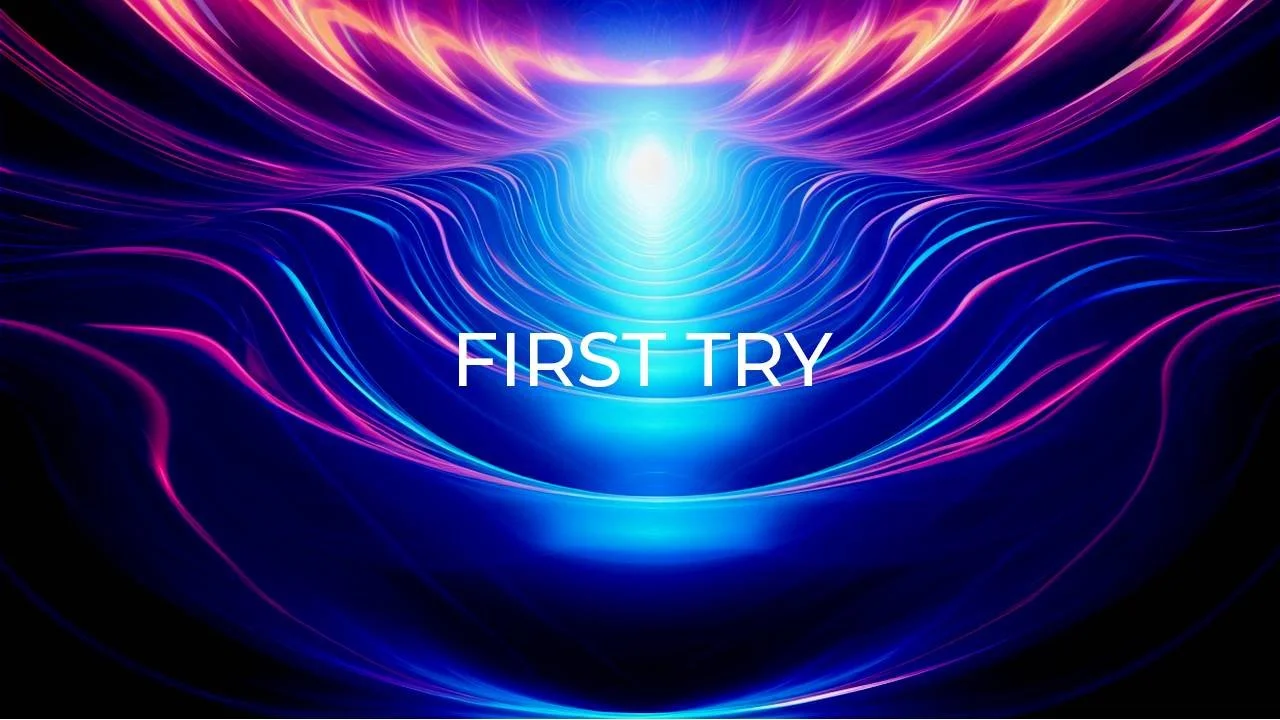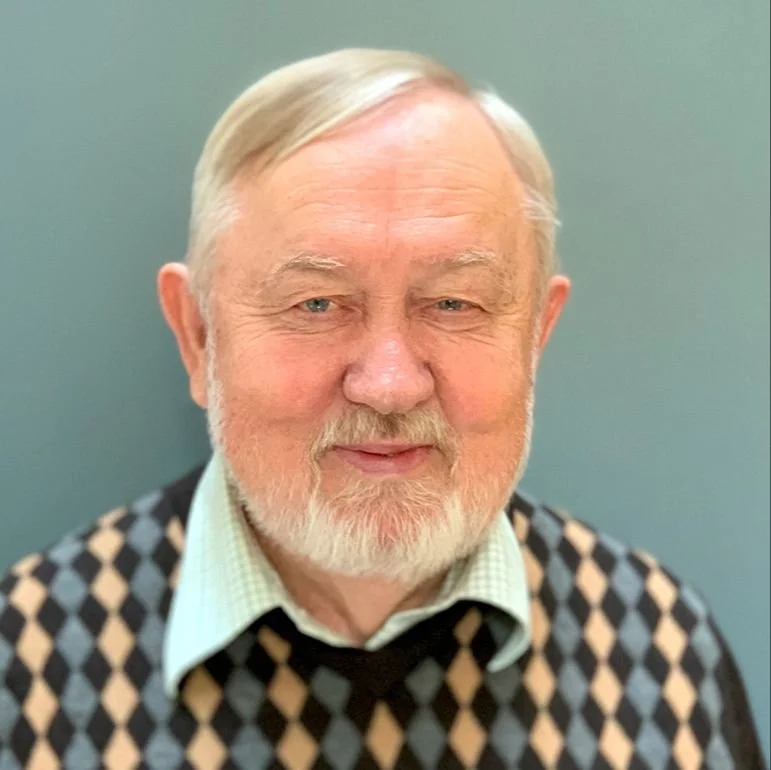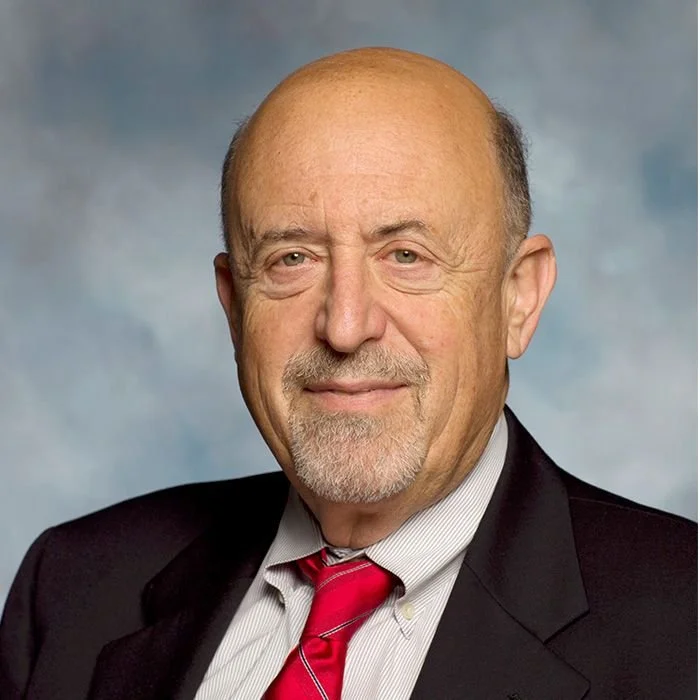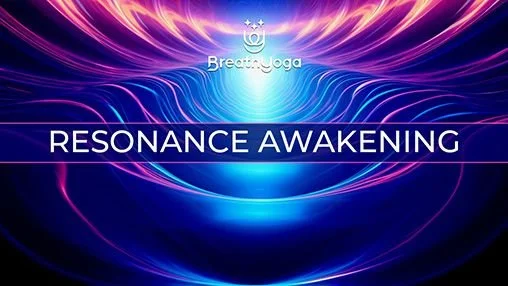
What is Resonance Frequency Breathing?
Resonance Frequency Breathing is a kind of 'perfect' breath rate which creates a state of optimal functioning and synergy in your body called 'resonance'. It is a simple, science-based method of breathing that anyone can do. It delivers measurable health benefits while encouraging subtle changes in awareness, leading to long-term change and personal growth. It is truly the one breathwork practice for self-care that everyone should know! In this article you will learn what Resonance Frequency Breathing is, how to practice it, and how to maximize its effectiveness for you.
Resonance Breathing Benefits
Breathing in this gentle, slow and circular breathing method is a very effective exercise for the baroreflex while providing benefits for your respiratory system, nervous system, brain, and heart. When a person breathes at their resonance frequency their respiratory system, nervous system, and cardiovascular system synchronize together and function more efficiently.
Lowers high blood pressure without medication
Soothes anxiety, lower stress and cultivate clear thinking
Increases Heart Rate Variability (HRV) - a key biomarker of aging
Coordinates brain activity related to memory, emotion and awareness.
Minimizes chronic pain
Heals and balances the nervous system
Resonance Frequency Breathing is a unique breathwork exercise in that it not only subjectively feels good, it brings benefits which are clinically measurable. It is also gentle, can be taught to anyone, and can be done by oneself on a daily basis, which is not the case for all breathwork practices.
Resonance Breathing for Anxiety
Anxiety, often characterized by an overactive sympathetic nervous system, can set the body on edge, leading to a cascade of physiological responses. Understanding the interplay between anxiety and the nervous system is crucial to exploring effective remedies, and here, Resonance Breathing emerges as a powerful antidote.
The Anxiety-Nervous System Connection
Anxiety tends to trigger a dominance of the sympathetic nervous system, commonly known as the "fight or flight" response. This overdrive primes the body for action, often leading to rapid, shallow breathing – a state of overbreathing. In this process, the balance of oxygen and carbon dioxide in the blood is disrupted, with a tendency toward lower levels of carbon dioxide.
Resonance Breathing as the Balancing Act
Resonance Breathing harmonizes the nervous system and guides the body back to equilibrium, providing a calming effect on the sympathetic nervous system. This increases the efficacy of the parasympathetic side, associated with rest and relaxation.
Boosting Carbon Dioxide Levels
One key element in the anxiety puzzle is the role of carbon dioxide. Overbreathing often depletes carbon dioxide levels, contributing to feelings of unease and hypervigilance. Resonance Breathing acts as a remedy by promoting a slower and deeper breathing pattern, allowing for the retention of carbon dioxide in the bloodstream. This simple shift in breathing dynamics enhances blood oxygen saturation, fostering a more balanced and oxygen-rich environment.
With regular practice of resonance frequency breathing, individuals often experience a profound shift in their sense of well-being. The recalibration of the nervous system, the elevation of carbon dioxide levels, and the subsequent increase in blood oxygen saturation contribute to a harmonious physiological state. This, in turn, manifests as a heightened sense of calm, reducing the grip of anxiety and promoting a feeling of overall harmony.
Resonance Breathing for Sleep
In the same way that Resonance Frequency Breathing works to tame anxiety by balancing the nervous system, this practice extends its soothing effect into the realm of sleep. For those grappling with insomnia or restless nights, this intentional breathing technique holds the promise of tranquil and restful sleep.
As the day turns to night, the nervous system transitions from the hustle and bustle of daily activities to a state conducive to rest. However, for many, the switch isn't always seamless. Anxiety and overstimulation can persist, casting a shadow over the prospect of a peaceful night's sleep.
Resonance Frequency Breathing can act as a gentle lullaby for the nervous system by creating an environment conducive to the activation of the parasympathetic nervous system. This shift from sympathetic dominance to parasympathetic prominence paves the way for a restful state, setting the stage for a serene night of sleep.
Resonance Breathing promotes a balanced nervous system, and can help addresses the root causes that often contribute to sleeplessness.
Resonance Breathing & Heart Rate Variability (HRV)
Understanding Heart Rate Variability
Heart Rate Variability refers to the variation in time intervals between successive heartbeats. While a seemingly simple concept, its complexity unveils a wealth of information about the autonomic nervous system – the intricate conductor orchestrating the symphony of our physiological responses. High HRV is often associated with a well-balanced and adaptable autonomic nervous system, whereas low HRV may signal stress or dysfunction.
The Significance of HRV
Beyond its role as a physiological metric, HRV carries profound implications for our health. Research has linked low HRV to an increased risk of mortality and accelerated aging. It serves as a sensitive indicator of the balance between the sympathetic (fight or flight) and parasympathetic (rest and digest) branches of the autonomic nervous system. Moreover, HRV can predict susceptibility to illness and serve as a marker of overall fitness levels.
Resonance Breathing's Contribution to HRV
By breathing at our resonance frequency, we harmonize our autonomic nervous system. The deliberate focus on creating a balanced and coherent nervous system extends its influence to HRV. The intentional synchronization with the resonance frequency promotes a dynamic interplay between the sympathetic and parasympathetic branches. This, in turn, results in an elevated HRV, signifying a more adaptive and resilient physiological state.
The Discovery of
Resonance Frequency Breathing
At the heart of our physiological rhythm lies a powerful metric known as Heart Rate Variability (HRV). Far beyond a mere measure of heartbeats per minute, HRV shows the balance between the two branches of the autonomic nervous system, providing a profound glimpse into our overall well-being.
Russian scientist Evgeny Vaschillo is known as the pioneer of Resonance Frequency Breathing. Vaschillo's early work was with the Soviet space program, observing the heart rate patterns of the cosmonauts from his workstation on earth. He observed that in a specific period of each day, the cosmonaut's heart patterns would show smooth sine wave patterns for a period, and then return to its normal chaotic pattern. Upon inquiry, he discovered that this sine wave pattern occurred when they were practicing their daily meditation.
He continued to study the oscillatory patterns in heart rate, blood pressure and breathing and performed more experiments. He discovered that by breathing at the natural timing of the baroreflex, at about 6 times per minute, it produces very high-amplitude oscillations in heart rate. This came to be known as the resonance frequency. Vascillo's discoveries continues to be the basis of all current applications of heart rate variability biofeedback .
Vascillo's work was further expanded upon by other scientists, notably Dr. Richard Gevirtz and Dr. Paul Lehrer. Their research on experienced meditators skills in to achieve calm, mental stillness and pain control showed that universally they would move their breath to the rate of resonance. By reverse engineering this breathing pattern to find which specific rates maximally increase heart rate variability, we have a simple practice of conscious breathing that anyone can do to hack their own nervous system to improve their health.
Why Does Resonance Happen?
The term "resonance" as we use it here, comes from physics. Resonance frequencies help oscillating systems interact with each other so that they can respond more effectively and coordinate with other oscillating systems. Oscillations are regular back-and-forth movements- just something moving or vibrating in a repetitive way. You can imagine a pendulum swinging or a guitar string vibrating. All kinds of things are in a constant state of oscillation including machines, nature and in our bodies.
Picture pushing someone on a swing. If you time your pushes just right, you can make the swing go really high without using much effort. That's resonance. It happens when the pushes match the natural rhythm or frequency of the swing, making it swing higher and more efficiently.
Or think of a wine glass. Tap it lightly, and you hear a sound. Tap it at just the right frequency, and it shatters – that's resonance. Or consider tuning a guitar. Pluck a string, and if you hit the right note, the other strings start vibrating too.
Or, imagine you're at a concert, and the bass makes your chest thump. That's resonance at play.
Whether it's sound waves, a building swaying in the wind, or even an opera singer breaking a glass with their voice – resonance is about hitting that sweet spot to make things work better. It's like finding the perfect timing for maximum impact.
If you are driving a car and press the gas pedal, the engine adjusts to provide more power. Resonance in your body works similarly. When stress signals the need for a change in pace, your body uses resonance to smoothly coordinate different systems of your body. Your breathing may quicken, your heart might beat a bit faster and all other processes kick in- all in harmony, ensuring a quick and effective response.
Oscillations happen in mechanical systems and they also happen inside our body- our heart, blood pressure, metabolism, nervous system and so on. Resonance frequencies make it so a faster heart rate makes the blood pressure go down and how an exhalation can make the heart beat slower. When we are in optimal health, these responses in our body are perfectly coordinated. But they tend to decline as we age or when we are sick.
Our breath is one of the few oscillating systems that we can consciously speed up or slow down. When we breathe at our resonance rate, our breath finds resonance with our baroreflex (blood pressure), heart rhythms and nervous system oscillations. And just how resonance frequencies help these a car to coordinate its actions to speed up and slow down, we can use resonance frequency breathing to coordinate our body systems to improve our health and wellbeing.
How Does Resonance Frequency Breathing Work?
Resonance Frequency Breathing operates by deliberately slowing down your breath to smoothly oscillate your breath at a rate of 5 to 7 breaths per minute. The exact rate is important and we will get into this later in the section of "How to Determine Your Personal Resonance Rate". This rate of breathing is the resonance rate of the blood pressure system and sets off a chain of physiological processes.
As you maintain this intentional breathing pattern, Respiratory Sinus Arrhythmia (RSA) comes into play. RSA is a phenomenon where your heart rate is influenced by your breath, accelerating during inhalation and decelerating during exhalation. This causes our heart to pump blood through the blood pressure system at just the right timing. The baroreflex, which is responsible for regulating blood pressure, finds its resonance rate at around 0.1 HZ which works out to a breath rate between 5-7 breaths per minute.
And as you will recall, resonance frequencies allow oscillating systems to respond to each other more effectively so when we breathe at this timing, the baroreflex is at its most responsiveness to changes in blood pressure. This synchronization then triggers a response in the nervous system, specifically elevating activity in the parasympathetic side. This shift in the nervous system results in an increased heart rate amplitude – a rhythmic equilibrium.
The impact of increased parasympathetic activity translates into tangible health benefits, reducing inflammation and high blood pressure, enhancing heart rate variability, promoting cardiovascular health and fostering a state of body-mind harmony. In essence, Resonance Frequency Breathing is a deliberate modulation of your breath's rhythm, setting in motion a physiological symphony that promotes balance, reduces stress, and contributes to overall well-being. Far beyond a mere technique, this method represents a scientific approach to aligning with your body's natural rhythms.
Resonance Breathing Vs Coherent Breathing
In this world of science based breathing techniques two techniques stand out and are often confused with each other: Resonance Breathing and Coherent Breathing. While they share common ground in their emphasis on intentional breath modulation, their focus on distinct metrics sets them apart.
Resonance Breathing: Tuning into the Baroreflex Frequency
Resonance Breathing centers its attention on syncing with the baroreflex, a regulatory mechanism for blood pressure. Pioneered by the likes of Dr. Paul M. Lehrer and Dr. Richard P. Gevirtz, Resonance Breathing involves consciously breathing at a specific rate – around 5 to 7 breaths per minute. This deliberate pace aligns with the resonance frequency of the baroreflex, enhancing its responsiveness to changes in blood pressure.
Historically, Dr. Paul M. Lehrer, a key figure in biofeedback research, explored the connection between breathing and cardiovascular function. His work laid the foundation for Resonance Breathing, emphasizing the importance of aligning breath with the body's natural rhythms for optimal health. The hallmark of Resonance Breathing is the detection of a state of resonance, manifested through an increased heart rate amplitude. This method acts as a precise calibration, orchestrating a harmonious interplay between breath and the baroreflex.
Coherent Breathing: Crafting a Harmonious Heart Wave
Conclusion
In essence, Resonance Breathing and Coherent Breathing, while rooted in intentional breath modulation, diverge in their primary focus. Resonance Breathing tunes into the resonance frequency of the baroreflex, creating a state of resonance detected through increased heart rate amplitude. Coherent Breathing, on the other hand, crafts a harmonious heart wave, concentrating on perfecting the oscillations of the heart rate. Both approaches offer unique insights into the intricate relationship between breath and heart rhythm, providing individuals with nuanced tools to enhance their well-being.
How to Practice Resonance Frequency Breathing
A 10-15 minute daily practice of Resonance Frequency Breathing is like a workout for your blood pressure, heart and nervous system. The increase in amplitude of both the blood pressure and heart wave is similar to spending time lifting weights. Just like how exercise gives benefits that extend beyond the session, a practice of conscious breathing at this rate will give benefits that last for days and weeks.
We recommend you practice this at least 10 minutes at a time when you can practice undisturbed and are not full of food. Mornings after you wake up and before your coffee is ideal. Caffeine constricts our blood vessels and can put some damper on the effects the practice has.
Sit, lay down, or stand in an aligned posture
Choose a visual/audio pacer to guide your breathing at your Personal Resonance Frequency. Most people average at five and a half breaths per minute or a 5.5 second inhale and a 5.5 second exhale. You may be different and precision matters. See below on how to determine your personal resonance frequency.
Connect your breath seamlessly from your inhale to your exhale without pause.
Relax as much as possible on your exhalations. Continually develop your ability to relax your muscles with each exhalation.
Cultivate a positive emotion such as gratitude or appreciation. Your presence, focus and thought can measurably affect your outcomes.
Follow if possible, with contemplative work such as guided journaling
Practice for a minimum of 12-20 minutes a day
Discovering Your Personal Resonance Frequency
While the general range for Resonance Frequency Breathing hovers between 5 to 7 breaths per minute, the precise resonance frequency can be as unique as your fingerprint. Factors like height, physiology, and personal preferences contribute to this individual variation. Pinpointing your specific resonance frequency involves a process of exploration and attunement.
Understanding the Range
The resonance frequency sweet spot typically falls within the 5 to 7 breaths per minute spectrum. However, even within this range, individual nuances come into play. What may resonate at 5 breaths per minute for one person might find its harmony at 5.5 breaths per minute for another.
A Personalized Journey
To determine your personal resonance frequency with accuracy, Experiment with breathing at different rhythms, ranging from 5 to 7 breaths per minute. Notice the nuances of comfort and resonance at each pace. Pay attention to your body's cues, exploring which rhythm aligns most harmoniously with your natural flow.
The 10-Breath Exploration
Engage in a deliberate exploration by breathing at 10 different rhythms within the resonance frequency range.
These are:
7 breaths per minute
6.5 breaths per minute
6 breaths per minute
5.5 breaths per minute
5 breaths per minute
Within these 5, there are two variations, breathing at an even ratio or an uneven ratio where the exhale is slightly longer.
Even Ratio
7 BPM, 4.3 seconds inhale, 4.3 seconds exhale
6.5 BPM 4.6 seconds inhale, 4.6 seconds exhale
6 BPM 5 seconds inhale, 5 seconds exhale
5.5 BPM 5.5 seconds inhale, 5.5 seconds exhale
5 BPM 6 seconds inhale, 6 seconds exhale
Uneven Ratio
7 BPM, 3.4 seconds inhale, 5.2 seconds exhale
6.5 BPM 3.7 seconds inhale, 5.5 seconds exhale
6 BPM 4 seconds inhale, 6 seconds exhale
5.5 BPM 4.4 seconds inhale, 6.6 seconds exhale
5 BPM 4.8 seconds inhale, 7.2 seconds exhale
Allow each rhythm to unfold for a few minutes, noting your comfort level and the subtle shifts in your physiological state. If possible, monitor your heart rate variability during this exploration, identifying the rhythm that elicits the most significant increase in HRV.
Invitation to Resonance Awakening
Embarking on this personalized journey is a profound step toward unlocking the full potential of Resonance Frequency Breathing. To guide you through this exploration, we invite you to join our free "Resonance Awakening" course. This immersive experience not only aids you in determining your exact resonance frequency but also provides a personalized breath guide tailored to your unique rhythm.
On the other hand, Coherent Breathing, associated with Dr. Stephen Elliott and the Institute of HeartMath, directs its focus toward crafting a coherent wave in the heart rate. The emphasis here is not on matching the baroreflex frequency but on perfecting the smooth oscillations of the heart. Dr. Stephen Elliott, a pioneer in heart rate variability research, contributed significantly to the understanding of heart coherence. Coherent Breathing typically involves maintaining a consistent breath rate, often around 6 breaths per minute, to encourage a more rhythmic and coherent heart wave. The core concept behind Coherent Breathing is optimizing the heart rate variability patterns, fostering a coherent and harmonious oscillation. This method aims to synchronize the heart's rhythmic patterns, promoting balance in the autonomic nervous system.
Join the Resonance Awakening Course
In the Resonance Awakening course, you'll embark on a transformative practice of daily resonance frequency breathing and guided journaling over one month. Join us in this exploration, and together, let's awaken the resonance within.









